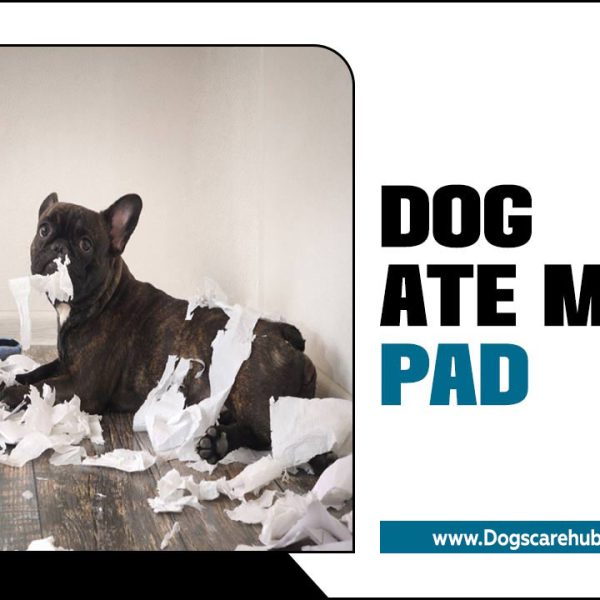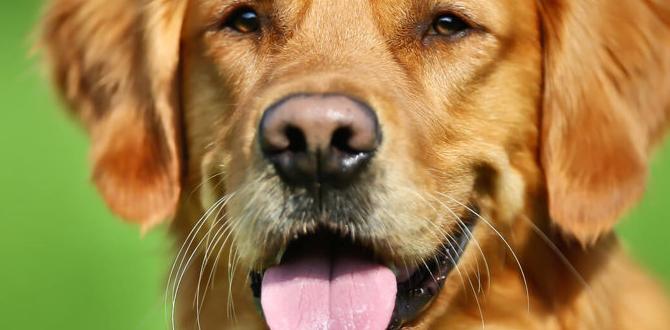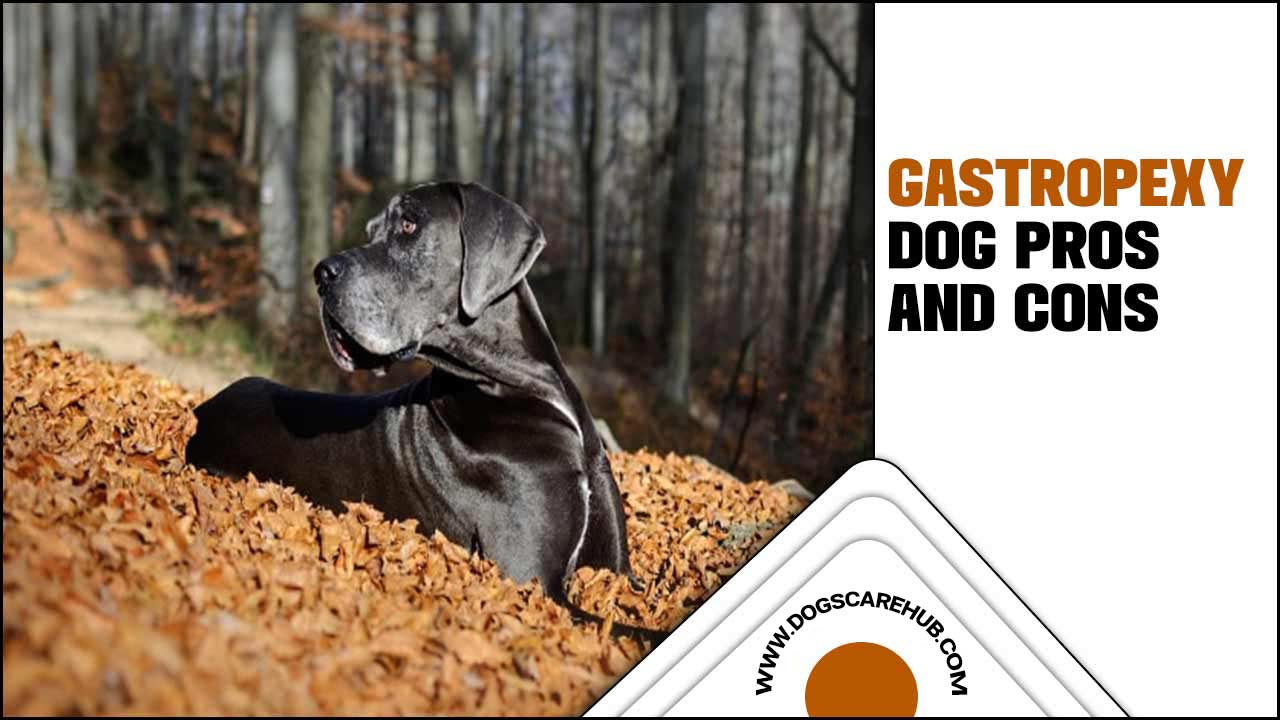Quick Summary: Preventing your dog from chasing cars is crucial for their safety. This guide offers beginner-friendly, proven methods focused on positive reinforcement, understanding triggers, and consistent training. Learn how to keep your canine companion safe around roads and traffic.
Does your heart leap into your throat every time a car rumbles down the street and your dog instinctively lunges towards it? You’re not alone! The urge for dogs to chase moving objects is deeply ingrained, and for many pet parents, the thought of their beloved furry friend running after a car can be a constant source of worry. It’s a common, frustrating, and potentially dangerous behavior. But here’s some good news: with the right approach, patience, and understanding, you can help your dog overcome this instinct and stay safe. We’ll walk through simple, effective strategies to manage and redirect this behavior, giving you peace of mind and your dog a safer way to engage with the world. Let’s dive in and learn how to tackle this challenge together!
Understanding Why Dogs Chase Cars
Before we can effectively stop dogs from chasing cars, it’s important to understand why they do it in the first place. This isn’t usually a sign of aggression, but rather a deeply rooted instinct. It’s a behavior many dog owners grapple with, and knowing the ‘why’ can be the first step to finding the ‘how’ to manage it.
The Prey Drive: A Natural Instinct
At its core, chasing is often driven by a dog’s natural prey drive. This is an instinctive, evolutionary trait that motivates animals to pursue anything that moves quickly, especially if it darts away. Think of it as your dog’s inner wolf or fox looking for an opportunity to “hunt.” Cars, with their speed and often sudden movements, can be the ultimate trigger for this instinct. The faster the car moves, the more exciting the chase becomes for some dogs.
Boredom and Excess Energy
Sometimes, a dog might chase cars simply because they have too much pent-up energy and not enough outlets for it. If a dog isn’t getting enough physical exercise or mental stimulation, they might create their own “fun”—and chasing a car can be interpreted as a high-stakes game. This is especially true for breeds known for their energy and working drives.
Excitement and Frustration
For some dogs, it’s not purely prey drive. Seeing a car can be an exciting event that they want to investigate or engage with. If they are on a leash and unable to reach the car, this excitement can quickly turn into frustration, leading to barking and lunging. They might be trying to play, herd, or simply express their overstimulation.
Lack of Socialization and Training
A dog who hasn’t been properly socialized or trained might not have learned appropriate ways to react to common stimuli like cars. If they haven’t been taught to ignore them or see them as something neutral, their instinctual reaction often takes over. This highlights the importance of early and ongoing training.
Safety First: Before You Begin Training
The absolute priority when dealing with a dog chasing cars is safety. While training is essential, there are immediate precautions you need to take to prevent any accidents. These steps aren’t about long-term solutions but immediate risk reduction.
Leash and Harness Essentials
Always keep your dog on a secure leash when you are near roads or areas where cars are present. A standard leash can be a lifesaver, but for dogs with a strong chase instinct, a more robust setup is often recommended. Consider a front-clip harness. These harnesses attach the leash to the dog’s chest, which helps redirect them back to you if they lunge forward. They offer more control than a collar alone, especially for dogs that pull or strain.
A sturdy, well-fitting harness is also vital. For strong pullers or dogs that might try to wriggle free, a dual-clip harness (attaching at both the front and back) can provide an extra layer of security. Always ensure the harness fits snugly to prevent escape, but not so tightly that it causes discomfort or chafes. Check out resources from the American Kennel Club for detailed guidance on harness fitting.
Secure Containment
If your dog has a tendency to bolt or has previously escaped your yard to chase cars, it’s crucial to review your property’s security. Ensure fences are tall enough, without gaps, and gates are always securely latched. For extremely determined escape artists, even temporarily, consider outdoor kennels or supervising them closely when they are in the yard. Your home and yard should act as a safe zone, entirely separate from the allure of street traffic.
Supervision is Key
Until you have made significant progress with training, constant supervision is non-negotiable when your dog might be exposed to cars. This means if you’re in the car, ensure your dog is secured and cannot get to a window where they can see and react to passing vehicles. If you’re walking, always maintain a firm grip on the leash and be hyper-aware of your surroundings, scanning for approaching cars.
Proven Training Techniques for Beginners
Now that we’ve covered safety, let’s explore effective, beginner-friendly training techniques. These methods focus on redirecting your dog’s attention, teaching them impulse control, and rewarding calm behavior. Remember to be patient and consistent—these are the cornerstones of any successful training program.
Step 1: The “Leave It” Command
The “Leave It” command is fundamental for redirecting your dog’s attention away from forbidden items or behaviors, including chasing. It empowers you to tell your dog to disengage from something they are interested in.
How to Teach “Leave It”:
- Start with a treat in your hand, closed into a fist. Let your dog sniff and show interest.
- When they stop trying to get the treat and pause, say “Yes!” or click (if using a clicker) and give them a different, higher-value treat from your other hand.
- Once they understand this, place a low-value treat on the floor and cover it with your hand. When they go to sniff or paw at your hand, keep it firm but not aggressive. The moment they pull away or look away, say “Yes!” and give them a better treat from your hand.
- Gradually increase the difficulty by leaving the treat uncovered for longer periods, then moving to different low-value items. Always reward with a better treat.
- Once they consistently ignore the item when you say “Leave It,” you can start practicing on walks with very mild distractions, and eventually, with passing cars at a distance.
Step 2: Redirecting Attention with a “Look at That” Game
This game helps your dog associate passing cars with something positive and shifts their focus from chasing to observing calmly. It’s about changing their emotional response to cars.
How to Play “Look at That”:
- Start at a significant distance from a road where you can see cars but your dog is unlikely to react strongly (e.g., from your porch, or a quiet street corner).
- As soon as your dog notices an approaching car, but before they react, say “Yes!” or click, and immediately give them a high-value treat.
- Repeat this every time a car passes. The sequence is: Dog sees car -> You mark and treat.
- Over time, your dog will start to look towards the car and then look back at you expecting a treat. This is the goal! When this happens, give them an extra special reward.
- Gradually decrease the distance to the road as your dog becomes more comfortable and less reactive. If your dog starts to react (straining, barking, lunging), you are too close, and you need to increase the distance again.
Step 3: Impulse Control Exercises
Impulse control training helps dogs manage their immediate desires and wait for permission. This directly combats the urge to chase.
Common Impulse Control Exercises:
- Sit-Stay and Down-Stay: Practice these commands with increasing durations and distractions. A dog that can calmly hold a sit-stay while a skateboard rolls by is learning valuable self-control.
- Waiting for Food: Have your dog sit and wait for their food bowl to be placed on the floor. They must wait for your release cue (“Okay!”) before eating.
- Controlled Greetings: Teach your dog to remain in a “sit” or “down” until you release them to greet people or other calm dogs. This teaches them to control their excitement.
Step 4: Desensitization and Counter-Conditioning
“Desensitization” means gradually exposing your dog to a stimulus (like cars) at a low enough intensity that they don’t react negatively. “Counter-conditioning” pairs that stimulus with something pleasant, like treats, to change their emotional response from excitement/fear/aggression to calm anticipation of reward. These two are powerful allies.
Implementing Desensitization and Counter-Conditioning:
- Find a controlled environment where you can observe cars from a safe distance (e.g., a park bench overlooking a quiet road, or through a window).
- Ensure the distance is far enough that your dog is completely relaxed. They might notice the car, but they shouldn’t be showing any signs of arousal like tense body language, stiffening, or vocalizing.
- As soon as a car appears in their line of sight, start feeding them small, high-value treats continuously.
- As soon as the car disappears, stop feeding treats.
- Repeat this process. The goal is for your dog to associate the sight of a car with receiving delicious treats. Eventually, they might even look to you expectantly when they see a car.
- Very gradually, over many sessions, decrease the distance to the road, always staying below the threshold where your dog starts to react. If your dog shows signs of stress, you’ve moved too fast. Increase the distance.
Tools and Gear to Help
Using the right equipment can make a significant difference in managing a dog that chases cars, especially during the training phases. These tools are not a substitute for training but can enhance your efforts and ensure safety.
Harnesses vs. Collars
While a flat collar and leash are standard, they offer limited control for a dog with a strong chase drive. Harnesses are generally preferred:
| Gear Type | Pros | Cons | Best For |
|---|---|---|---|
| Front-Clip Harness | Redirects pulling and lunging towards the owner. | Can sometimes twist or be uncomfortable for certain dogs if not fitted properly. | Dogs that lunge, pull, or have a strong chase instinct. |
| Dual-Clip Harness | Offers maximum control by allowing attachment at both the chest and back. | Requires some practice to get used to; can be more to manage initially. | Strong pullers, escape artists, and dogs with extreme chase drive. |
| Head Halter (e.g., Gentle Leader) | Provides excellent control by steering the dog’s head; discourages pulling. | Requires proper introduction for the dog to accept it; can be misused if not taught well. | Dogs that are very strong pullers; can be an alternative if harnesses are not suitable. |
| Martingale Collar | Prevents dogs from slipping out of their collars. | When used incorrectly or excessively tightened, can be harmful; not ideal for direct pulling control. | Dogs with slender heads or those prone to slipping collars. (Use with caution and proper guidance.) |
Always ensure any equipment is properly fitted. A loose harness or ill-fitting head halter can be ineffective or even dangerous. Websites like The Humane Society of the United States offer general guidance on positive training methods and equipment choices.
Leashes
For training purposes, a standard 6-foot nylon or leather leash is usually best. Avoid retractable leashes, as they offer less control and can be dangerous, especially when dealing with a dog that lunges suddenly or is prey-driven.
High-Value Rewards
When training, especially for a behavior like chasing cars, you need highly motivating rewards. These are treats that your dog absolutely loves and only gets during training sessions. Think small pieces of cooked chicken, cheese, hot dogs, or special pup-approved training treats.
When to Seek Professional Help
While many dogs can improve with dedicated home training, some cases are more complex and may benefit from professional guidance. Don’t hesitate to reach out if you feel overwhelmed or aren’t seeing the progress you desire.
Signs You Might Need a Trainer
- Extreme Reactivity: Your dog becomes highly agitated (barking, lunging, growling) from a significant distance, making training difficult.
- Previous Incidents: Your dog has had a close call or been injured in a car-related incident.
- Lack of Progress: You’ve been consistent with training for several weeks and are not seeing any improvement.
- Aggression Concerns: The chasing behavior is accompanied by true aggression (e.g., biting at the car, not just barking).
- Your Own Safety or Confidence: You feel unsafe orLack confidence in your ability to manage the situation.
Choosing the Right Professional
Look for a certified professional dog trainer or a veterinary behaviorist. Certifications like those from the Certification Council for Professional Dog Trainers (CCPDT) or the American College of Veterinary Behaviorists (ACVB) indicate a level of expertise and adherence to ethical, science-based training methods. Avoid trainers who recommend harsh or punitive methods, as these can often worsen reactivity and fear-based behaviors.
A qualified professional can assess your dog’s individual motivations, environmental factors, and develop a tailored training plan. They can also provide hands-on guidance and support to ensure you are implementing techniques correctly. Resources like the American Veterinary Medical Association (AVMA) can offer insights into understanding animal behavior and when to seek professional help.
A Sample Training Plan Progression
Here’s a rough example of how a training plan might progress. Remember, this is a template and needs to be adapted to your dog’s pace and reactions.
Week 1-2: Foundation Skills & Controlled Environments
- Intensively practice “Leave It” and “Look at That” indoors and in a quiet, enclosed yard.
- Focus on impulse control games (e.g., waiting for food, sit-stays).
- Use a front-clip harness or secure leash.
Week 3-4: Introducing Distant Sightings
- Find a location where you can see cars from a significant distance (e.g., a park bench overlooking a quiet road, or a parking lot far from traffic lanes).
- Practice the “Look at That” game. Reward calm observance.
- Ensure you are always below your dog’s reaction threshold. If they react, you are too close.
Month 2-3: Gradual Proximity and Increased Distractions
- Slowly decrease the distance to the road in controlled environments.
- Introduce short, leashed walks in quieter neighborhoods with minimal traffic.
- Continue “Leave It” with passing vehicles. If your dog lunges or barks, immediately retreat to a greater distance.
- Practice “Look at That” consistently.
Month 4+: Real-World Application & Maintenance
- Progress to walks in slightly busier areas, always prepared to create distance if needed.
- Continue to reward calm behavior around cars.
- Maintain “Leave It” and “Look at That” skills as a habit.
- Regular training sessions keep their impulse control sharp.
Important Considerations:
- Patience: This behavior can take months, even years, to fully manage. Celebrate small victories!
- Consistency: Every interaction around cars matters.
- Positive Reinforcement: Always focus on rewarding desired behaviors.
- Management: Until the behavior is reliably changed, manage your dog’s environment to prevent opportunities for chasing.
Frequently Asked Questions About Dogs Chasing Cars
Q1: My dog only chases bikes and skateboards, not cars. Is this the same problem?
A: Yes, it is very similar! Bikes, skateboards, and even fast-moving children can trigger a dog’s innate prey drive. The principles for managing and retraining this behavior are largely the same: redirecting their attention, teaching impulse control, and using positive reinforcement.
Q2: Can I ever trust my dog off-leash near a road?
A: For most dogs with a strong history of car chasing, it is generally not recommended to trust them off-leash near roads. The risk of a relapse is too high, and the consequences can be severe. Prioritize safety and keep them leashed in such environments.
Q3: What if my dog completely ignores my commands when a car is coming?
A: This usually means the trigger (the car) is too overwhelming for your dog at that moment, or the reward you’re offering isn’t valuable enough. You need to increase the distance from the car significantly and use much higher-value treats. You might also need to go back to easier training sessions in less distracting environments.
Q4: Is there a specific breed that is more prone to chasing cars?
A: Breeds with a strong prey drive and high energy levels are often more prone to chasing. This includes many herding breeds (like Border Collies, Australian Shepherds), terriers (like Jack Russells, Pit Bulls), and sighthounds (like Greyhounds, Whippets). However, any dog can develop this behavior through instinct, boredom, or lack of training.
Q5: How long will it take to stop my dog from chasing cars?
A: This varies greatly depending on the dog, their age, the intensity of the behavior, and the consistency of your training. For some, it might take a few months of dedicated work. For others, it could be a lifelong management process requiring consistent reinforcement of alternative behaviors.
Q6: I’m worried about my dog’s safety. Should I use a muzzle?
A: A muzzle is a safety tool, not a training solution. It can prevent a dog from actually grabbing onto a car or occupant if they get too close. However, it doesn’t address the underlying chasing instinct. While managing the behavior and preventing opportunities is key, a muzzle should be introduced positively and should not be the sole method of control. It’s best used in conjunction with professional guidance and alongside positive training techniques.
A Safe Journey Together
It’s completely understandable to feel anxious when your dog exhibits the behavior of chasing cars. The fear for their safety is very real. But by understanding the roots of this instinct, implementing strong safety measures, and dedicating time to positive, patient training, you can make significant progress.
Remember that every dog is an individual, and what works for one might need adjustments for another. Be kind to yourself and your furry companion during this process. Celebrate the small victories—the moments your dog looks at a car and then immediately looks back at you, or the times they successfully ignore a passing vehicle on command. These are monumental steps!
By focusing on building a stronger bond, providing clear communication through commands like “Leave It,” and creating positive associations with things that used to trigger them, you are not just teaching them to avoid danger; you’re teaching them impulse control, trust, and how to navigate the world safely. Keep up the great work, and enjoy building a more secure and harmonious life with your dog!
Meet Elyse Colburn, the devoted canine companion and storyteller behind the enchanting world of “Tales, Tails, and Adventures Unleashed.” A passionate dog enthusiast with a heart full of paw prints, Elyse Colburn shares heartwarming tales and insightful adventures, celebrating the joy, loyalty, and endless antics that make every dog a true hero. Join Elyse Colburn on this tail-wagging journey, where every post is a love letter to our four-legged friends.








